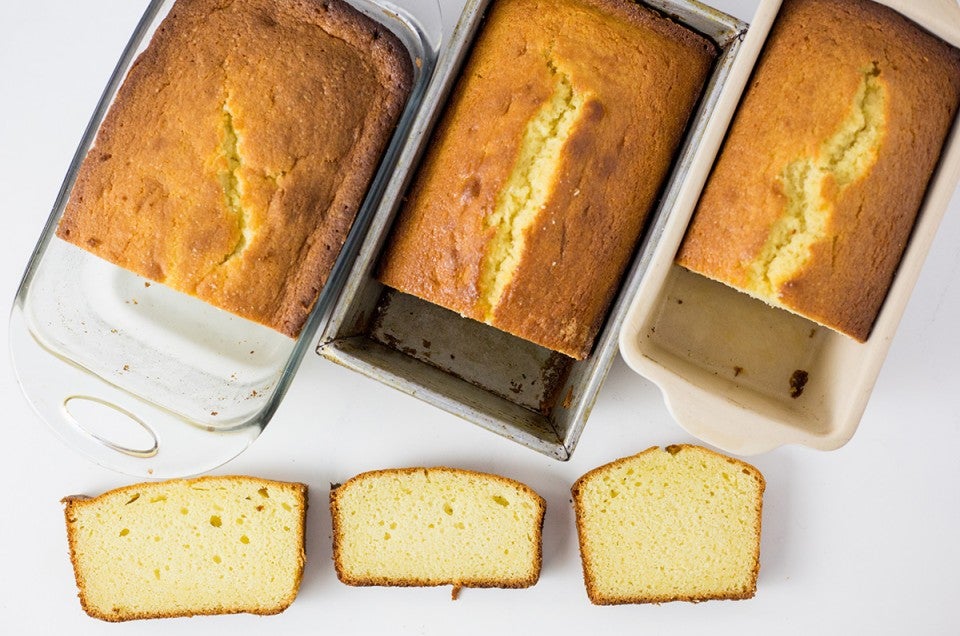


When it's time to bake, you reach for the pan you have, often without thinking about what it's made of. If your recipe calls for a 9" x 5" loaf pan, you grab the one in your cupboard and fill 'er up. What might surprise you is that your results can be dramatically different, depending on whether you've baked your recipe in a glass or metal pan. Stoneware, another common material in bakers' kitchens, has its own set of behaviors.
Let's explore how the pan you're baking in can change your results.

When you put something in the oven to bake, the ideal scenario is for a smooth, even transfer of the oven's heat from the air around your pan through its sides and in turn, through the batter or dough within. As the ingredients warm up, the magic happens. Leaveners are activated, things rise and are eventually set in their finished form, all while the kitchen smells heavenly.
The ideal vessel for baking in most cases is a light-colored pan made from a metal that's an efficient heat conductor. (Read more about pan colors and their effect on baking.)
Aluminum is the material that most professionals reach for.
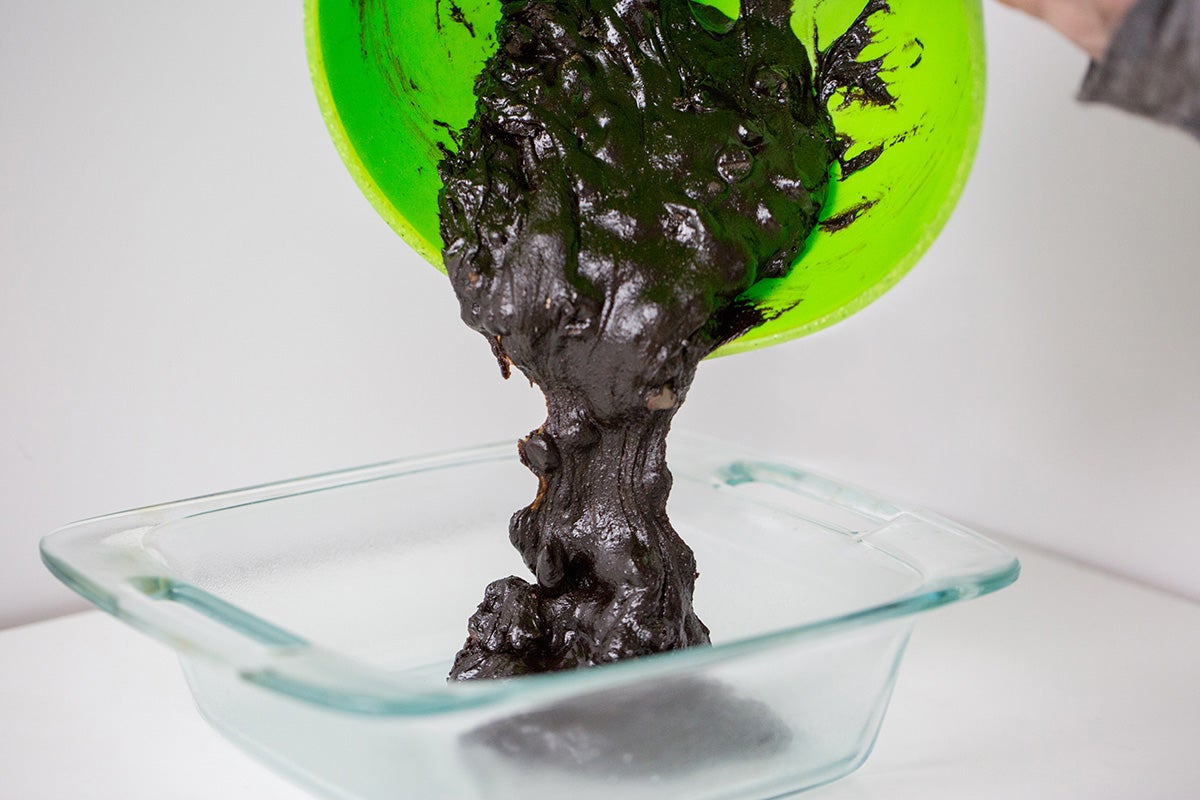
Glass pans are extremely common – and they have advantages of their own – but be aware that they are insulators. Glass slows the flow of heat between the oven's air and your batter, until the glass itself heats up. Then the glass retains heat far longer than metal will.
Because of these properties, batter baked in glass often takes longer. At the same time, it's easier to over-bake brownies in a glass pan, because it takes longer for the center to cook. By the time the center finishes, the glass is acting like a heat sink, and the outer edges of your brownies are getting very tall and probably pretty hard.
What's good about glass? It's non-reactive, which means it won't corrode from the acid in your lemon cake, or change the flavor of anything you bake in it. You can see through it, which is great for pie crusts; just peek underneath! And once glass heats up, it will do a good job of making sure bottom crusts get crisp and golden.
After doing some research, I learned why I've had such inconsistent results with stoneware. With this kind of pan, it's all about the composition of the clay, and in some cases, how it's made.
Hand-thrown pie plates will bake differently than a stoneware pan made from liquid slip poured into a mold. A hand-thrown plate is likely to have more air pockets in it, which will slow down heat transfer. The amount of minerals and metals in the clay itself also determines the rate at which heat can move through the pan.
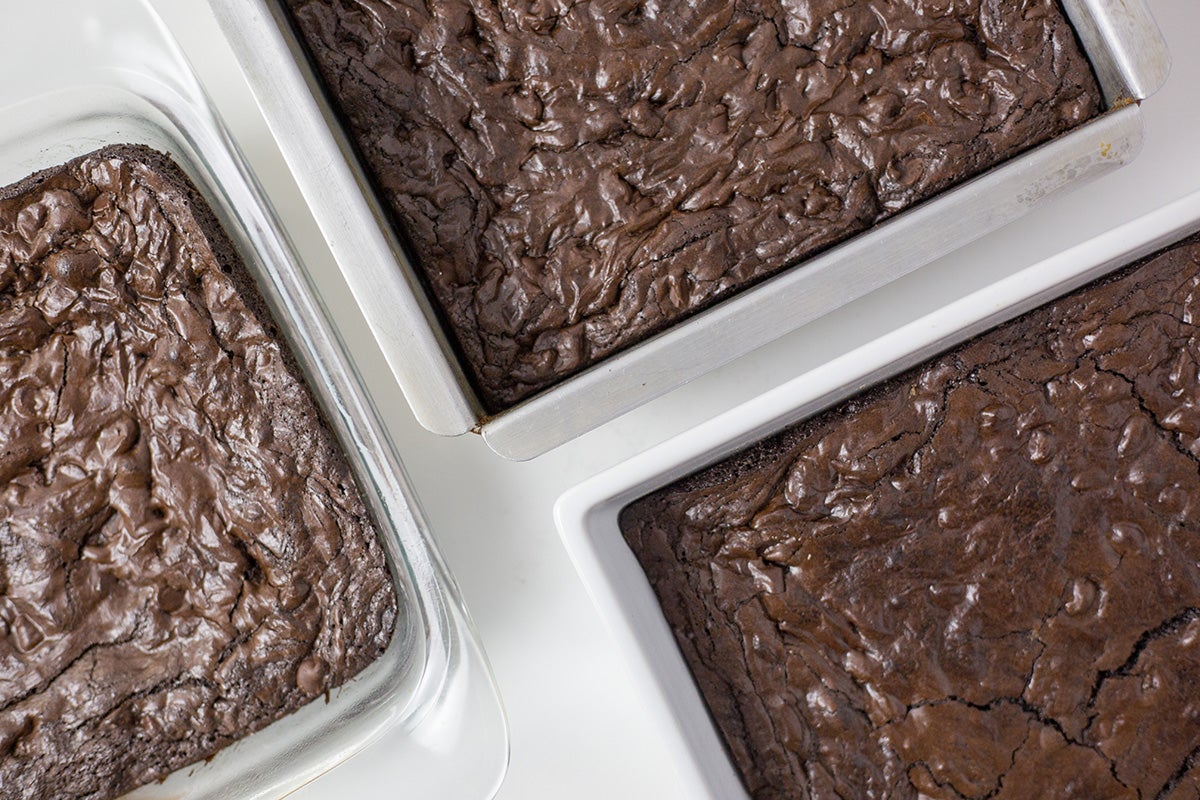
We make several batches of our Fudge Brownie recipe, and bake them side by side in the same oven for the same amount of time.
See the edge of the glass pan batch climbing up and curling inward? The glass heats up more slowly than metal, melting the sugar in the batter. Once the glass is hot, it holds on to the heat instead of transmitting it inward. The hotter edge causes the batter to climb higher and cook further than the batter in the other pans.
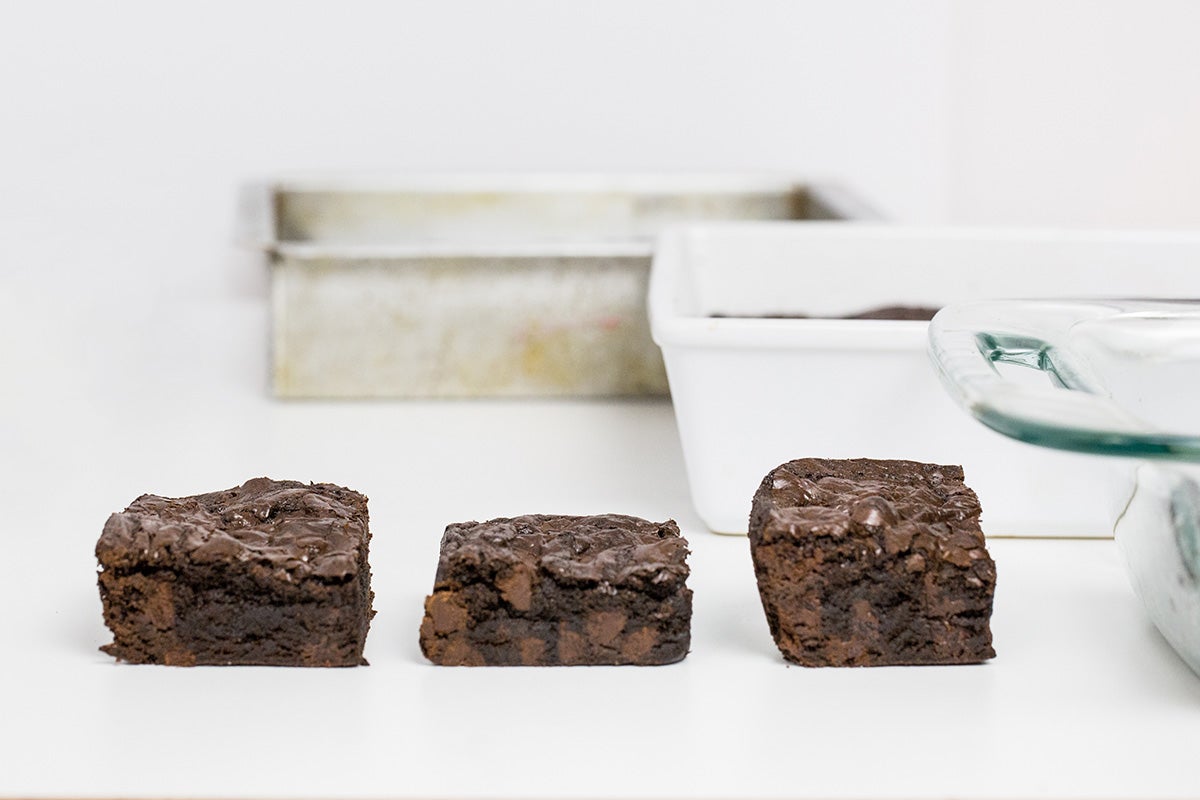
As you can see, the different shapes and dimensions of the pans give some distinct differences when you line them up.
All three brownies have nice, shiny tops. The metal pan is a true 8" square. The stoneware pans' sides are slightly sloped, and the dimensions are more like 8 1/2" square, so the batter is spread a little thinner.
The glass pan shows the most dramatic difference between the top and bottom dimensions, but the curve you see at the back of the brownie is on display, as well as the downhill slope toward the brownie's inner corner. The outside edge of this brownie is much crunchier and harder than brownies from the stoneware or metal pans.
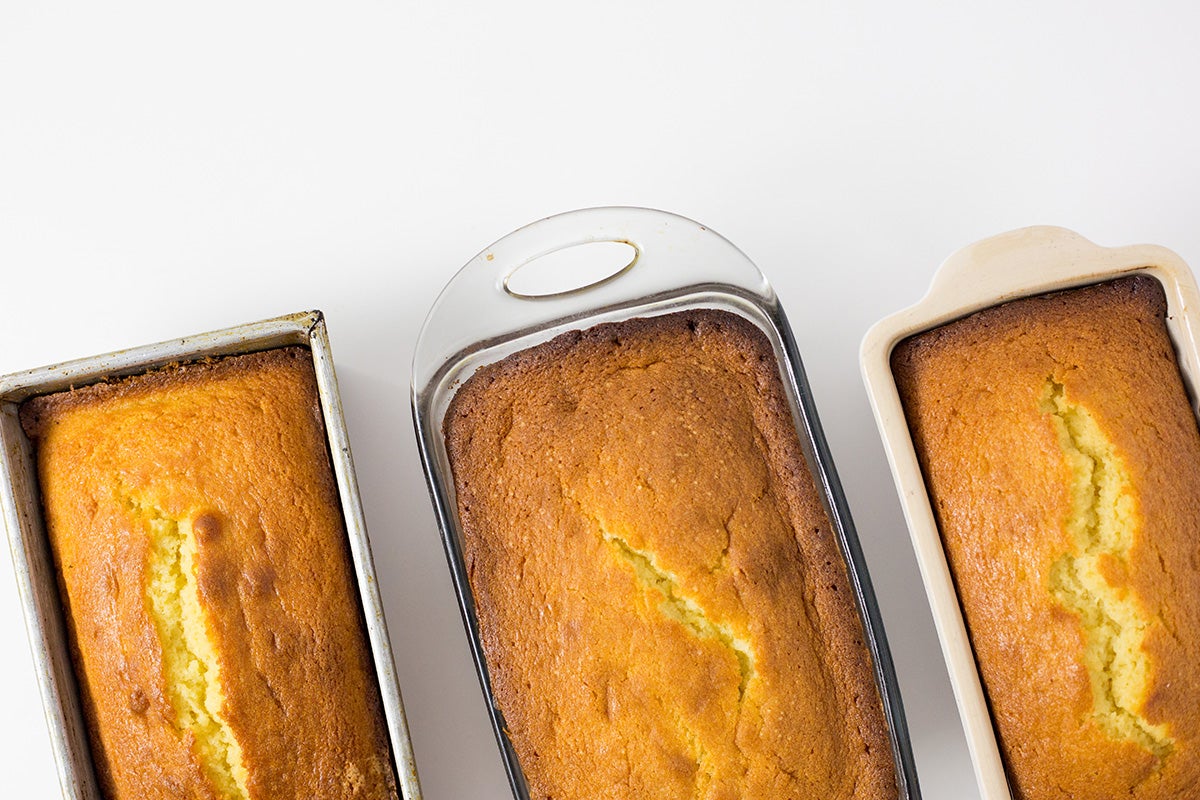
Pound cake is a high-sugar, high-fat formula that takes more than an hour to cook all the way through. As this lineup of cakes shows, reaching for glass or metal or stoneware will change the way the cake bakes. The shapes of these pans are different, with glass having the widest span across the top.
It's interesting to note that the dome of the glass-baked cake is the lowest; that's a function of slower heat transfer. The outside edge also shows the rounded, souffléd edge we saw on the brownies. The taller tops of the metal and stoneware cakes are a result of the heat traveling faster from edge to the center, activating the leavener before the center set and sending the middle upward.

The cross-section of these cakes are a surprise at first. I expected the glass slice to have the darkest, thickest crust, but the reverse is true.
On further reflection, I realize the insulating properties of the glass protect the bottom edge to a degree. The metal and stoneware pans have darker edges; as the heat moves through the batter, it helps the tops get higher, but the sugar and fat in the formula cook more efficiently (and get darker) where they're in contact with the pans.
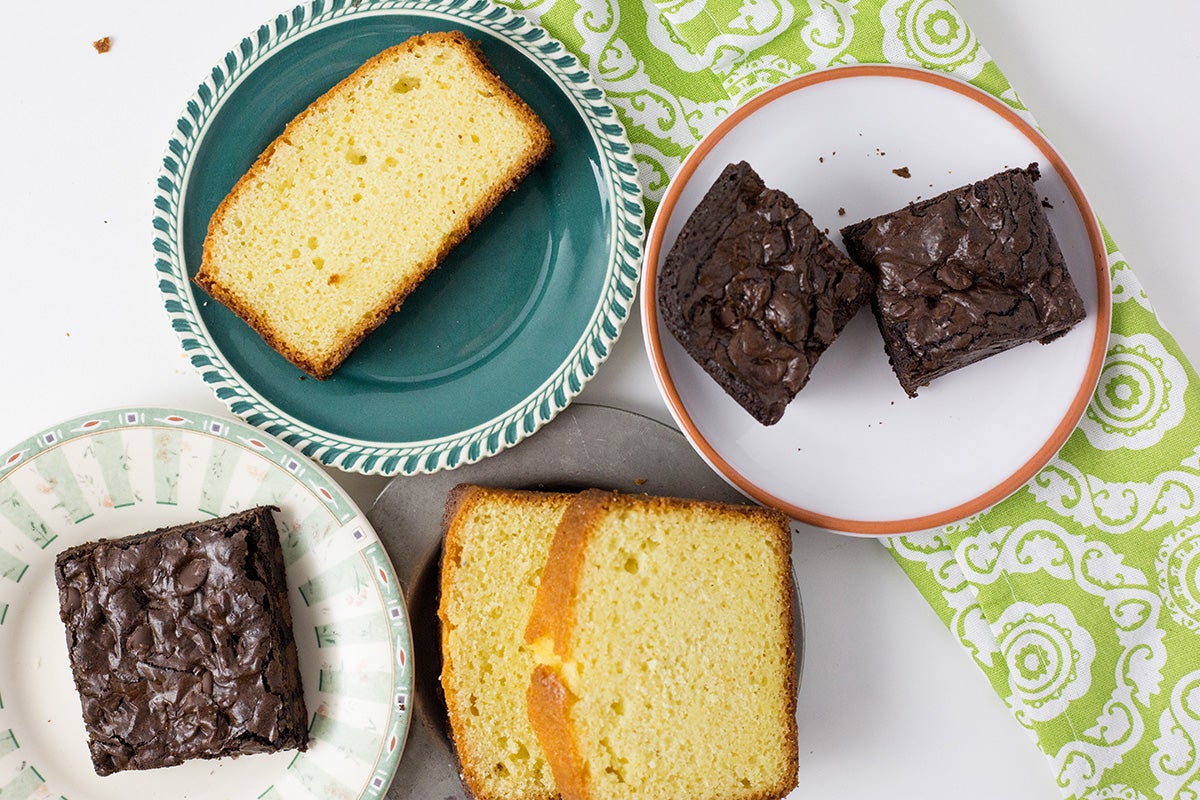
King Arthur Flour recipes are tested in metal pans, for their baking efficiency and accuracy for size. Glass pans' dimensions can be all over the place (try taking a measuring tape to the store next time you shop; you might be surprised). Stoneware composition varies too much to rely on for testing (different levels of conductivity and sizes are often not exact).
That said, any pan is the right pan if it helps you put baked goods in the oven. The standard advice for baking in glass is to lower the oven temperature by 25°F from what the recipe calls for, and bake up to 10 minutes longer. The hard edges we see here are more pronounced in high-sugar, high-fat recipes; your casserole or bread pudding are less likely to be adversely affected.
Stoneware just takes some getting to know; once you learn how your pan bakes, you can make any adjustments that work for you. And you can always reach out to the Baker's Hotline, if you're not sure where to start.
Let us know what your favorite baking pan is made of, and what you're baking in it, in the comments below.

